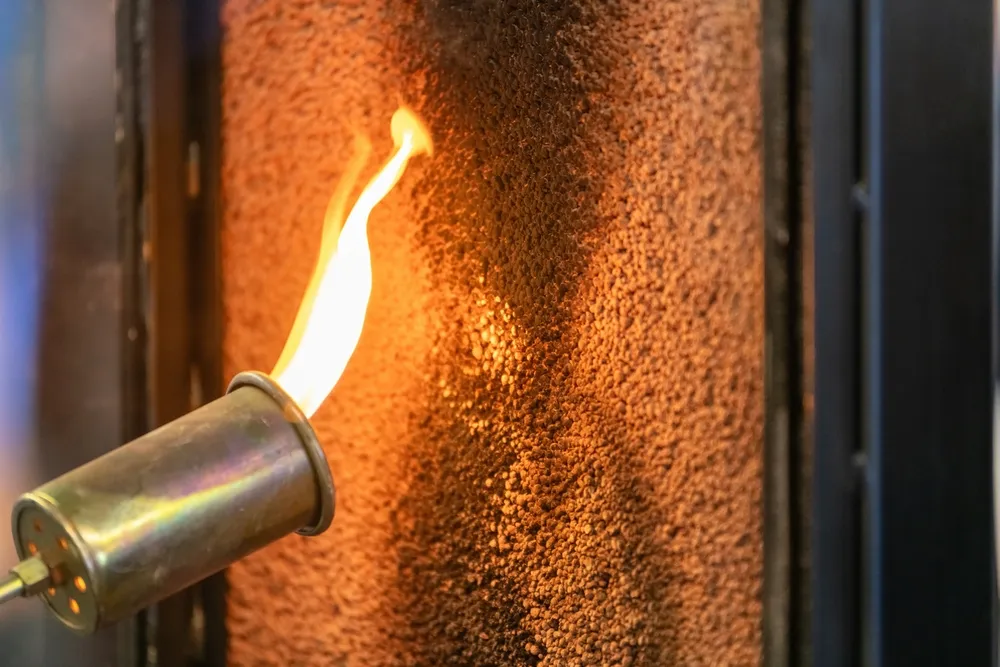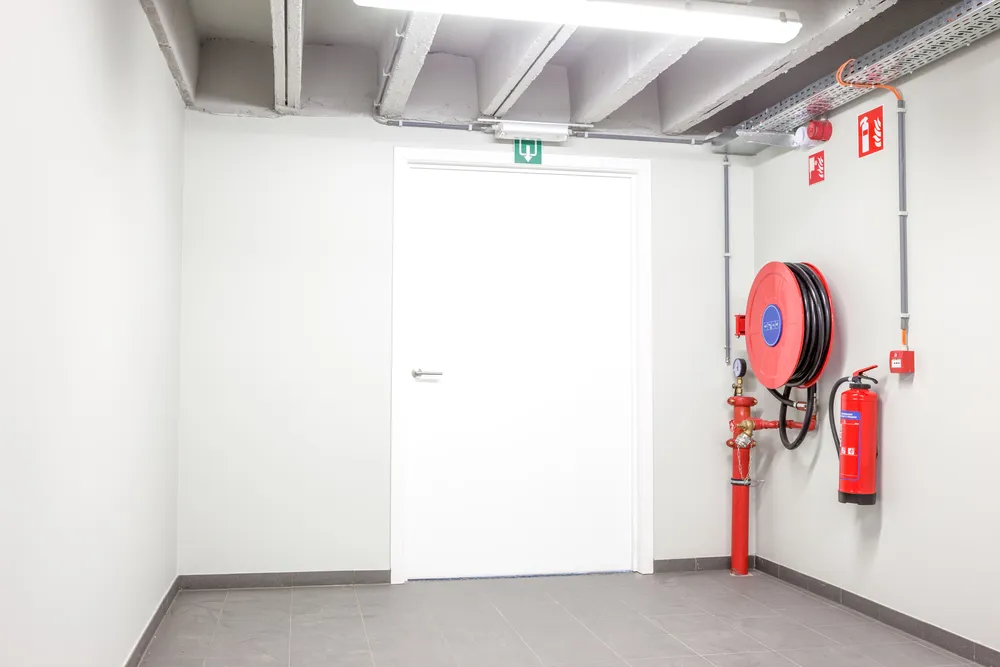Passive fire protection is a compliance exercise and a commercial imperative. At IECC, we see how material choices in building envelopes and life-safety systems directly affect occupant safety, operational costs and sustainability outcomes. A wave of emerging solutions is transforming the field, from next-generation intumescent coatings and aerogel insulation to nanosystems, fibre-reinforced fireproofing and bio-inspired retardants. These aren’t just code-minimum options; they are reshaping how buildings are designed, specified and maintained.
In this article, we’ll break down the technical performance and business realities of these materials, including how they are installed, how they age and what they cost across their full lifecycle. Also covered here are the regulatory implications for projects, as well as supply-chain and retrofit considerations. The goal is to equip owners, designers and specifiers with clear guidance to reduce risk, manage costs and deliver greener buildings.

Instead of relying solely on conventional mortars, boards and sprays, today’s solutions combine advanced science with practical application. Below are some of the materials that reshape the way buildings defend against fire.
Intumescent coatings have long been a staple of passive fire protection, forming an insulating char layer when exposed to heat. What’s new is how modern chemistries are pushing these coatings beyond their traditional limits. Manufacturers are delivering thinner, tougher and more adaptable products that work across a wider variety of substrates while reducing maintenance needs. This makes them highly attractive for high-rise towers, industrial facilities and retrofits where space and durability are critical.
Few materials have generated as much excitement in fire science as aerogels and nano-insulation. Originally used in aerospace applications, these ultra-lightweight, highly porous materials are now making their way into commercial construction. Their ability to provide high thermal resistance in extremely thin profiles makes them ideal for modern façades and space-constrained retrofits. Beyond performance, many are being developed with recyclability and eco-friendly production in mind.
The most transformative changes in passive fire protection are emerging from research labs. Scientists are exploring materials that not only resist fire but also adapt to it, creating smarter, longer-lasting systems. Nanotechnology is enabling coatings that activate faster and more evenly, while biomimicry is guiding the development of eco-friendly composites that outperform synthetic retardants. Research is also focused on durability, ensuring protection lasts for decades with minimal intervention.
Traditionally, this system came with an environmental trade-off: safe in a fire but costly to the planet. Heavy cementitious sprays, chemical-based retardants and resource-intensive production left behind a carbon and waste footprint that clashed with modern sustainability goals. Today, material science and innovation are rewriting that narrative. From low-carbon cementitious mixes to bio-inspired coatings, a new generation of fire solutions is making it possible to deliver world-class safety and strong environmental performance in the same package.
Intumescent coatings are essential for protecting structural steel, timber and other building elements by expanding into a protective char when exposed to fire. Historically, these coatings relied on high-VOC solvents and halogenated chemicals, raising concerns about toxic smoke and poor air quality. The latest generation of eco-friendly coatings is tackling these issues head-on, combining reliable fire resistance with safer chemistries and improved durability. They are now an attractive option for projects where environmental credentials and long-term lifecycle costs matter.
Cementitious fireproofing has long been the backbone of passive fire protection, yet its environmental footprint is significant due to Portland cement production being a major global emitter of CO₂. In response, researchers and manufacturers are developing low-carbon alternatives that combine proven fire resistance with reduced embodied carbon. By replacing traditional binders, incorporating recycled content and improving application methods, these advanced materials make it possible to achieve structural safety while aligning with green-building benchmarks.
Green-building certifications are no longer optional for many projects; they are essential markers of marketability and compliance. Passive fire protection, once overlooked in sustainability assessments, is now a contributor to overall green performance. By specifying sustainable fire solutions, project teams can secure credits across multiple certification categories, including embodied carbon, indoor environmental quality and responsible materials sourcing.
Fire protection materials have traditionally been treated as “end-of-life waste” once a building is refurbished or demolished. That model is no longer acceptable in an era focused on circular economy principles. Manufacturers and contractors are now designing passive fire systems with disassembly, recycling and reuse in mind. By planning for what happens at the end of a product’s life cycle, these innovations help reduce landfill waste, recover valuable materials and close the loop on sustainability.

Commercial buildings face unique fire safety challenges: higher occupancy, complex layouts, mixed-use functions and strict compliance requirements. Choosing the right passive fire protection materials isn’t just about ticking a compliance box; it’s about ensuring business continuity, reducing risk and future-proofing assets. Advanced fire-resistant materials are increasingly being applied in offices, retail centres, healthcare facilities, data centres and high-rise towers.
Intumescent and nanotechnology coatings are proving especially valuable in modern commercial projects, where space efficiency and architectural aesthetics matter. These coatings allow designers to maintain exposed steel or timber elements without sacrificing fire protection.
Commercial projects demand materials that serve multiple functions: thermal comfort, acoustic performance and fire protection. Aerogels and advanced insulation systems meet these needs while reducing energy use, making them a favourite for sustainable office towers and mixed-use complexes.
The introduction of innovative fire-resistant materials in Australian commercial construction offers real potential but also presents strict compliance challenges. The National Construction Code (NCC) and related fire standards were developed primarily around conventional materials. To safely integrate new technologies, project teams must understand how these frameworks apply in practice. Early engagement with compliance pathways is essential for securing approvals, avoiding costly redesigns and ensuring long-term safety and performance.
Every new material in Australia must demonstrate compliance with the NCC (Building Code of Australia). Evidence of suitability is established under Part A5, which specifies how products prove compliance. Fire performance is verified through recognised test standards:
Codes evolve continuously. Missing a revision, such as updates in NCC 2022 and the sustainability pathway in NCC 2025, can leave projects exposed to compliance risks.
Laboratory testing alone is not enough. Regulators require robust evidence packages including durability data, installation details and long-term performance. Accepted forms of evidence include:
Overseas certifications such as UL or FM Global may support understanding but are not accepted as standalone evidence under the NCC.
While compliance with fire standards remains paramount, sustainability pressures are shaping the way new products are assessed:
Fire regulation in Australia is shifting rapidly as new hazards and sustainability requirements emerge. Companies that track these changes proactively can reduce approval risk and keep projects market-ready:
Choosing advanced fire-resistant materials is about technical compliance and making design, sustainability and commercial decisions that will shape a building’s performance for decades. Architects have a role in this process, bridging aesthetics with function and creativity with regulation. By engaging with architects early and consistently, owners, engineers and suppliers can ensure passive fire protection enhances the overall project vision.
Architects are responsible for ensuring that safety doesn’t come at the expense of design integrity. They must seamlessly integrate fire protection into the building’s visual and functional identity, often working with slim margins of space and demanding client expectations. By collaborating from the outset, specifiers and suppliers can help architects identify advanced materials that support open layouts, exposed structural elements and modern finishes while still delivering robust fire protection.
One of the challenges architects face is reconciling compliance with creative freedom. Codes and standards often set rigid requirements that can seem to limit innovation. Partnering with engineers and fire specialists ensures that architects have pathways to compliance without sacrificing their vision. This can include performance-based solutions, customised testing and mock-ups that demonstrate how materials hold up under fire and environmental stress.
Sustainability is no longer optional; it’s a core requirement in commercial projects and architects are often the champions of this agenda. They are tasked with aligning material choices with certification frameworks. By working closely with architects, material providers can highlight low-carbon, bio-based and recyclable fire solutions that meet safety codes and strengthen a project’s environmental credentials.
While architects drive the vision, they must also remain mindful of cost and long-term viability. Selecting fire protection materials is not only about upfront price but also about durability, maintenance and retrofit potential over the building’s life. Close collaboration ensures access to reliable lifecycle data, allowing a balance of short-term budgets with long-term performance and risk reduction.
The design and construction process is becoming increasingly digital, giving architects and their partners new ways to evaluate and select fire protection materials. By using BIM and simulation tools, fire performance can be modelled alongside structural, mechanical and environmental systems. This supports compliance and helps experts make informed, design-sensitive choices.
Advanced fire-resistant materials are unlocking new levels of safety, sustainability and efficiency. But with innovation comes complexity. Unlike conventional products with decades of market data, new systems often raise questions around validation, installation and long-term performance. Project teams that anticipate these hurdles are better positioned to adopt cutting-edge solutions without costly delays or compliance risks.
One of the biggest hurdles for adopting new materials is proving they can perform as reliably as traditional systems. While lab results and manufacturer claims may be promising, regulators, insurers and clients want hard evidence that advanced materials will hold up under real-world fire conditions. The challenge is that many innovations are relatively new to the market and lack long-term performance data. To overcome this, project teams must rely on testing and third-party certifications to demonstrate compliance and build confidence in adoption.
Even if a material delivers on performance, it can still present risks if supply chains are fragile. Advanced products are often manufactured by niche suppliers, sometimes located overseas, which makes availability uncertain. Long lead times, shipping delays or a lack of local distributors can stall construction schedules and increase costs. To avoid these pitfalls, developers and contractors must take a strategic approach to procurement, ensuring there are reliable supply agreements in place and that critical materials can be sourced within project timelines.
Many advanced fire-resistant materials are not “plug-and-play.” They require specialised handling, equipment or curing processes that differ from conventional systems. Without adequate training, installers may apply materials incorrectly, undermining performance and compliance. For example, thin intumescent coatings may require precision spraying, while aerogel panels need careful detailing to avoid thermal bridging. The solution lies in proactive workforce development, so manufacturers and contractors must collaborate on training programmes, mock-ups and quality assurance protocols to ensure installations meet design intent.
High upfront costs often discourage the adoption of innovative fire protection systems, especially in competitive commercial markets. Yet, many of these materials promise savings over the lifecycle of the building through reduced maintenance and lower operational risks. The challenge is convincing stakeholders who may be hesitant without robust long-term data. By conducting lifecycle analyses, presenting warranty-backed assurances and referencing comparable case studies, decision-makers can be reassured that a higher initial investment will translate into long-term value.
Building regulations are often slow to evolve and many were drafted with traditional materials in mind. This creates uncertainty for new materials that may outperform older ones but lack formal recognition in codes. Navigating approval can become one of the biggest delays in a project if not managed carefully. Early engagement with authorities and fire engineers helps establish pathways for approval, whether through performance-based solutions or custom technical assessments.
We’re at a crossroads: keep treating new fire-safe materials as experiments or embrace them as the catalysts for safer, greener and more profitable buildings. From intumescent coatings to fibre-reinforced composites, bio-based retardants and multifunctional façades, are already here. The next step is ours to validate through testing and collaborative projects. At IECC, we don’t see passive fire protection as paperwork; we see it as a chance to add real value: safer occupants, lower costs and stronger market positioning. Let’s move beyond compliance and lead the market in building safer, greener, future-ready environments.